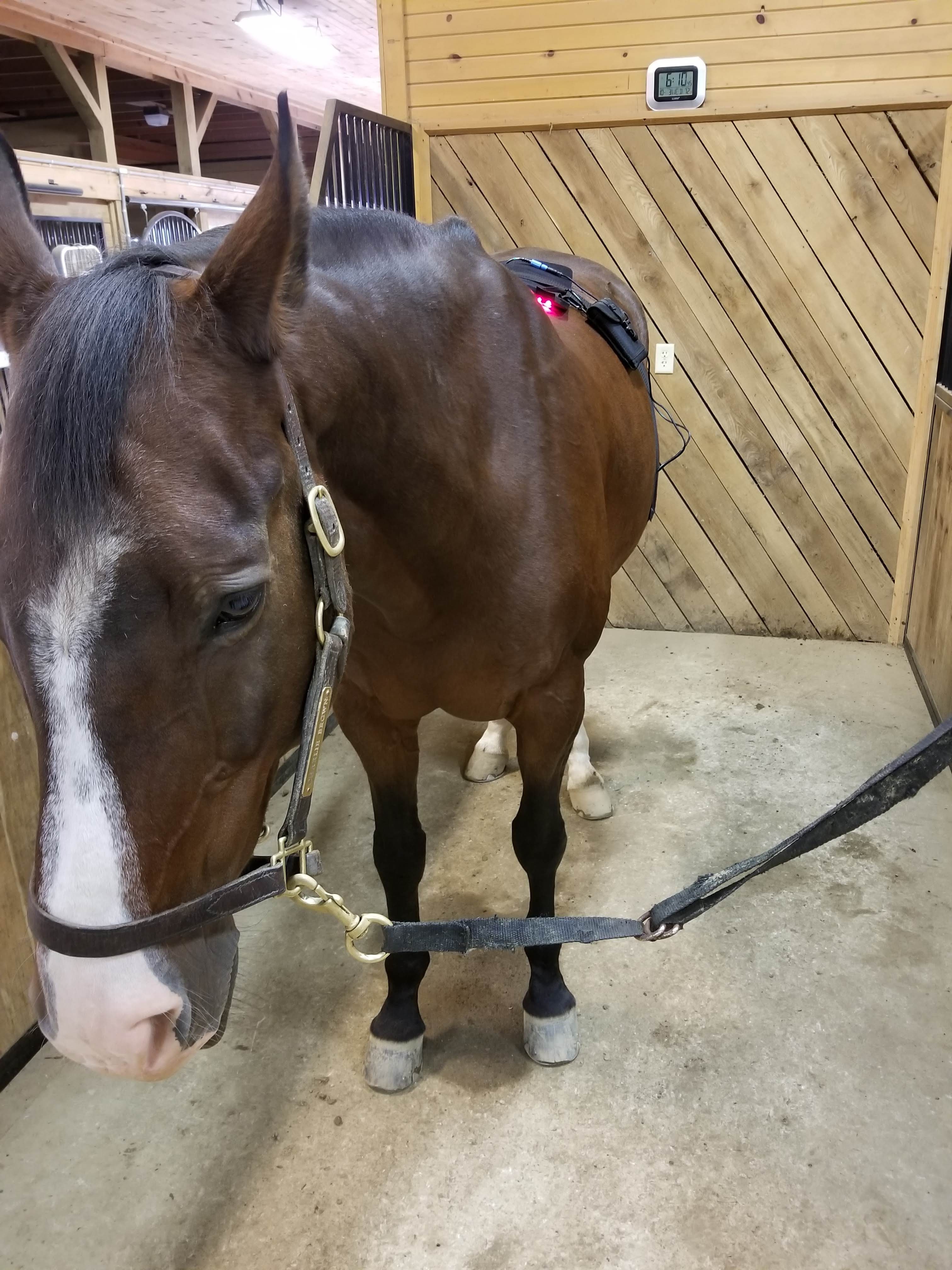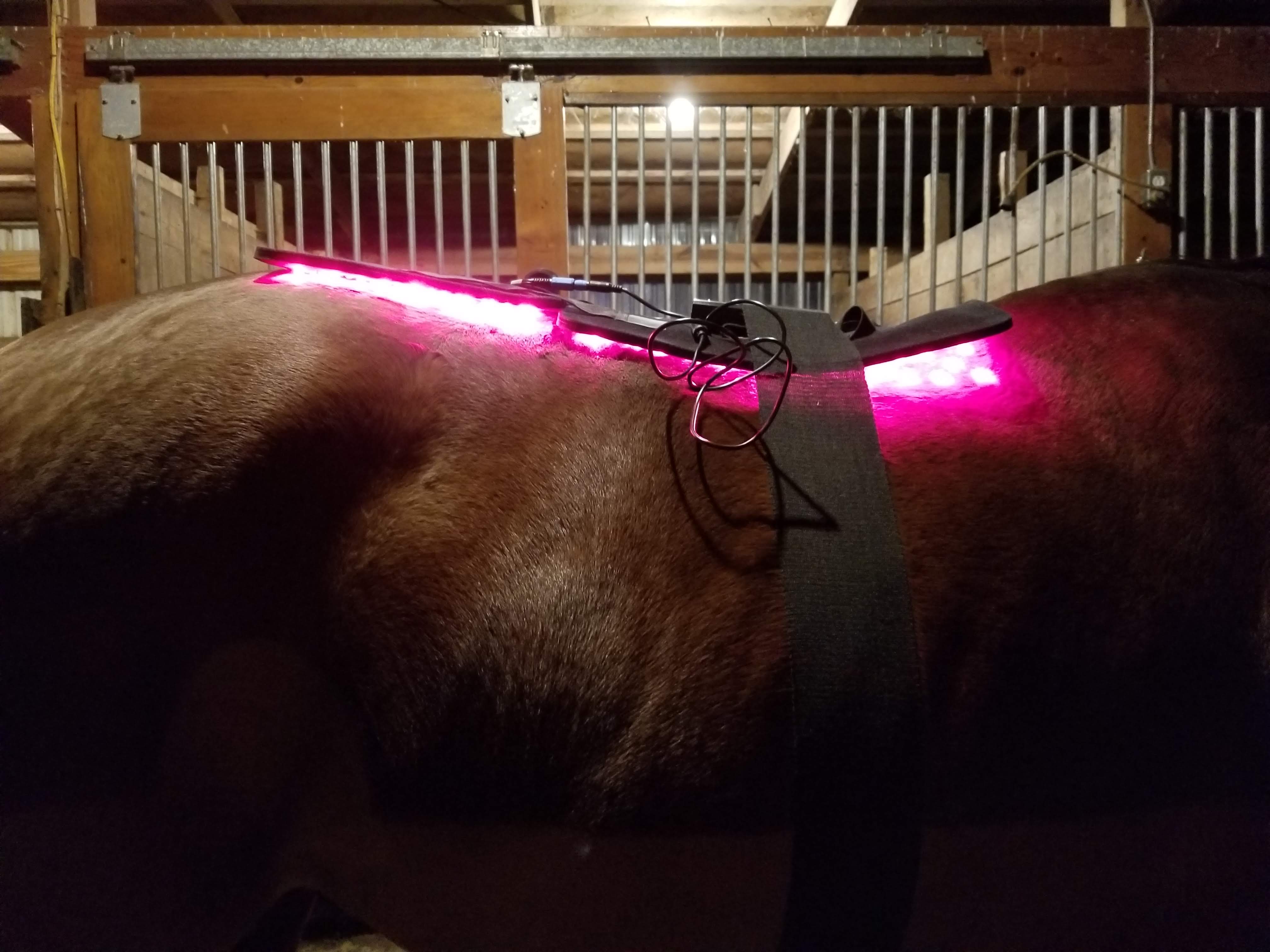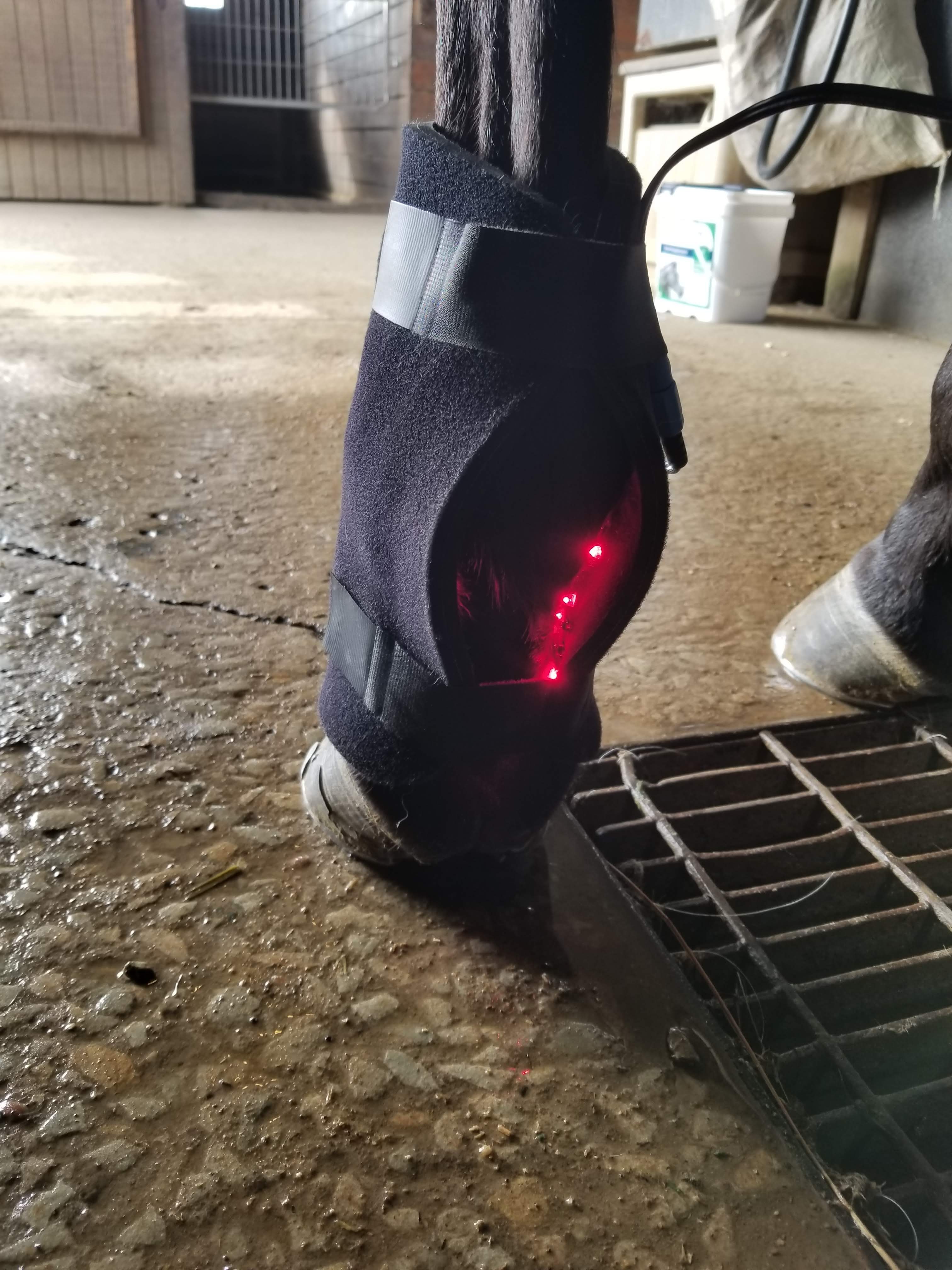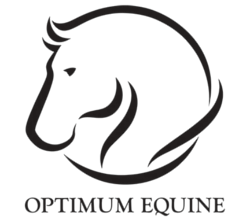It’s a question I get asked all the time: “What made you decide to do this?” Usually I give a lengthy answer about the whole journey that brought me to starting Optimum Equine and becoming an ESMT, but what it really comes down to is this: “Because I wanted to help the horses.”
I have been delighted to share the benefits of sports massage with dozens of happy horses and their doting riders over the past year, and all the positive feedback reminds me that the goal of helping the horses is being met day after day. But still there were those four delicate legs that massage could not address, or chronically sore backs, necks, or hamstrings that needed something more. So I started researching options that could enhance the massages and address the problems I continually run into. I am proud to say that Optimum Equine now offers red light and near-infrared light therapy and this month’s blog is a departure from equestrian life so we can delve into the science behind light therapy!

One of the answers I often give when asked the “why” question is: “because it works.” But then I put my nerd hat on and explain that the science behind massage is well-understood. We know that it works and we know the physiology of WHY it works. As a horse girl with a science degree, knowing WHY a treatment works for my horse is crucial to me. So as I set out researching options for expanding my practice, I slowly ruled out many available options because the mechanisms for healing were not well-understood. Or at least not explained in ways that I could understand.
I had heard a lot about low-level light therapy and I quickly realized I was on the right path when I was able to pull up article after article about with pain-reducing effects on a variety of conditions ranging from delayed onset muscle soreness (Douris et al., 2006), osteoathritis (Oshima et al., 2011), and wound healing (Whelan et al., 2001). But the articles I found explaining WHY this works… that was a home run for me (Desmet et al, 2006 & Huang, Chen, Carroll & Hamblin, 2009). So bear with me as we go on a walk down nerd lane and learn about the physics and physiology about healing pain with lights…

1. Pony laser beams!*
*Not a laser.
Laser is the popular vernacular for most treatments involving lights, but the main difference between “light” and “laser” is the lens the light is filtered though. Lasers involve a focal beam of light and can have tissue heating effects or even cut tissues (i,e., when used for surgeries). Light therapy uses lights which are diffuse, which makes them more safe to use, but equally effective for pain-relief and healing effects. That takes us to point 2…
2. The Goldilocks of Wavelengths
All lights have a specific wavelength. Those in the 380 to 700 nanometers spectrum are visible to the human eye. Those in the 600 to 1100 nm spectrum can be absorbed by mammalian tissue. For that reason, low-level light therapy incorporates red lights (635 to 700 nm) and near infrared lights (700 to 1000 nm). The red light is most easily absorbed by soft tissues near the light source, such as muscles, ligaments, tendons and soft tissues near the skin’s surface while the near infrared light wavelengths can penetrate more deeply and to act on joints.
3. Photo-bio-modu-what?!
Photobiomodulation is the process by which light is absorbed and produces a chemical change within a cell, comparable to photosynthesis in plants. Our bodies are full of photoreceptors–in our eyes to absorb light and transmit those signals to our visual cortex in the brain and in our skin to convert sunlight into vitamin D3–but what I learned during my research is that those photoreceptors are everywhere. By stimulating them with the appropriate wavelengths, a desirable chemical change is produced. It is thought that the cells’ mitochondria are the initial site for these changes, leading to increased ATP (cellular energy) production, protein synthesis, and increased oxygen binding. Increasing these processes in a damaged cell helps them return to normal, healthy homeostasis.

Whew. That was a lot of sciencing for one post, but I just can’t help myself sometimes. If you’re still with me, you have to admit: that’s pretty cool stuff. Now I know why you really read all the way to the end, and that’s because you want to know how it can help your horse. I love that it can be used for a variety of conditions, but the heart and soul of Optimum Equine is about improving performance, so my hopes were that the light therapy could do exactly that. Enter my favorite guinea pig, Charlie Brown.
Day 1 with the light therapy pads on, he stood like a champ, I had no worries that he would knock over the battery pack or step on a cord. After treating a leg that had an old injury, I moved it to his back. Wow did he love that! His eyes softened almost immediately and he stood like a statue (see Figure 1). He was totally focused on how good the light therapy felt and didn’t move an inch! Normally he’s quite obnoxious in cross ties, pawing and chewing on everything…. it was a welcome change.
He was less than thrilled to wake up from his blissed out state when I tacked him up and took him outside to work. But I had to know if those warm fuzzy feelings made him feel better under saddle! After a long walk warm up in the hay fields, we trotted some straight lines. I noticed immediately that he was more even in my reins–something that we normally have to work up to. The canter quality was a little better right off the bat and when he threw in some changes for fun (he does that… dressage horses, am I right?) they were clean and through. Feedback from a few other test ponies has been positive as well–one rider noticed a big change in her horse’s connection and suppleness over his topline.
Much like massage, light therapy increases circulation to the treated areas, providing the desirable effects that myself and my fellow riders and clients noticed immediately. Also like massage, I know that the light therapy keeps working after the treatment has ended. I’m looking forward to sharing our progress with you in future updates as I continue to use the light therapy on Beau, and I look forward to sharing the benefits of light therapy with your horse! Until next time, happy schooling 🙂
